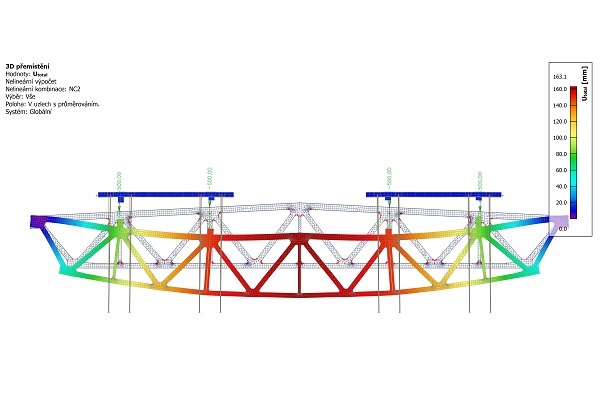Lectures:
1. Basic principles of fire resistance calculation, structural design using limit state method.
2. Temperature-time curves, standard time-temperature curve, parametric time-temperature curve, heat transfer.
3. Concrete structures – table fire resistance, heat exposure model.
4. Concrete structures – simple calculation method, isotherm 500 method and zone method.
5. Concrete structures – advanced calculation method, structural response model of statically determinate and indeterminate structure.
6. Concrete structures – risk of explosive spalling.
7. Steel structures - simplified heat exposure model, mechanical properties depending on temperature.
8. Steel structures - structural response model.
9. Steel structures - fire resistance assessment of structural elements and joints, assessment of the technical state of the steel structure after a fire.
10. Composite steel and concrete structures - simplified heat exposure model, mechanical properties depending on temperature.
11. Composite steel and concrete structures - structural response model, fire resistance, assessment of structural elements and joints.
12. Timber structures - simplified heat exposure model, mechanical properties depending on temperature.
13. Timber structures - structural response model, fire resistance assessment of structural elements and joints, assessment.
14. Modern computational procedures for checking the fire resistance of structures.tures.
1. Basic principles of fire resistance calculation, structural design using limit state method.
2. Temperature-time curves, standard time-temperature curve, parametric time-temperature curve, heat transfer.
3. Concrete structures – table fire resistance, heat exposure model.
4. Concrete structures – simple calculation method, isotherm 500 method and zone method.
5. Concrete structures – advanced calculation method, structural response model of statically determinate and indeterminate structure.
6. Concrete structures – risk of explosive spalling.
7. Steel structures - simplified heat exposure model, mechanical properties depending on temperature.
8. Steel structures - structural response model.
9. Steel structures - fire resistance assessment of structural elements and joints, assessment of the technical state of the steel structure after a fire.
10. Composite steel and concrete structures - simplified heat exposure model, mechanical properties depending on temperature.
11. Composite steel and concrete structures - structural response model, fire resistance, assessment of structural elements and joints.
12. Timber structures - simplified heat exposure model, mechanical properties depending on temperature.
13. Timber structures - structural response model, fire resistance assessment of structural elements and joints, assessment.
14. Modern computational procedures for checking the fire resistance of structures.tures.
